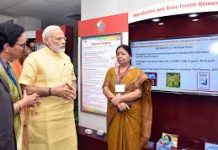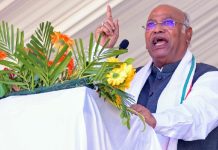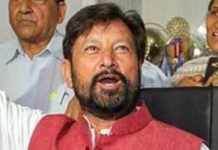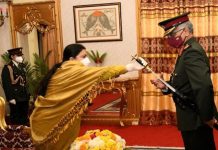As India celebrates the spirit of being a Republic, it is time to take a look within and around; time to count the gains and losses. It is a tall order but one that has to be addressed
“Nafrat ke bazaar mein, mohabbat ki dukan khol raha hoon”, amid hate I bring the message of love.
Author: Rahul Gandhi.
Target: Narendra Modi. But this is not about Rahul Gandhi or Narendra Modi; nor is it about the Congress or the BJP; or politics for that matter. Take out the sting and sift fiction from fact; count one’s blessings and tabulate the strides and regret the losses. Put simply it is time for introspection and that too an honest one.
As India steps into another year of celebrating the spirit of being a Republic, as it wraps itself in the essence of freedom and surges forward with renewed energy and aplomb, it is time to take a look within and around; time to count the gains and losses; time to take stock of what we have achieved and the distance yet to tread; what we have in our grip and what remains to be fathomed.
It is a tall order but one that has to be addressed because sans introspection every nation and its soul is hollow.
In its 76th year of freedom and 73rd of being a Republic, India has a lot to rejoice and celebrate.
The regiments that march past the President of India on Rajpath now renamed Kartavya Path are not symbolic. They spell strength and gallantry and showcase India’s might as a nation. Watching each one of them in their grandeur and splendor, marching along the stretch from the Rashtrapati Bhawan is enough to make every patriot’s heart swell with pride with a predominant This is my India feeling.
The gains include our military prowess, our development chart, our being poised firmly on the world map as a nation to be watched and our resilience to fight adversity. It is an India where every patriot has a fair share. Therefore, to dissect today’s India to being Modi’s India is missing the wood for the trees.
However, it would not be incorrect to examine post-Modi India both in its positives and negatives and go forward.
Contrary to perception, the list of positives is rather long. Take out the politics and there are a lot of Modi-isms to write home about.
For starters, it is during the Modi era that the pride of being an Indian was sufficiently injected. And this goes well beyond being a mere slogan.
The Modi government took concrete steps in celebrating the spirit of freedom be it through the Azadi ka Amrit Mahotsav or the Har Ghar Tiranga initiative. And these were not handed down in a usto you kind of programs but those in which everyone participated.
It was for the first time in recent years that the Har Ghar Tiranga initiative demonstrated a craze for the tri-colour. People reached out to actually buy the national flag to hoist on their rooftops. Such was the demand that shops ran out of flags and those who did have them, sold them at a premium. The spirit: Tiranga at any cost. It was national fervor at its peak and a pride that was exemplary.
However much one may damn the Modi-led dispensation, one cannot take away from it, its effort to inculcate the spirit of freedom in every Indian. Like it cannot, its attempt to shift focus from the elite to commoners. On this count, Modi’s pro-activeness in resurrecting forgotten heroes and giving an average Indian his due, tops the chart.
As for the first, Modi has ensured a level playing field for national heroes. He has ensured that the dominance of the Nehru-Gandhis on the psyche of the nation is visibly reduced if not completely diminished.
A case in point: the creation of the Prime Ministers Museum in Teen Murti complex, which till Modi decided to have it reworked, was synonymous with Jawaharlal Nehru: India’s first Prime Minister.
It was his post- Independence home and one which was turned into a memorial. The Modi dispensation changed that and rightly so on grounds that Nehru should share space with successive Prime Ministers whose contribution to the nation’s growth and development cannot be undermined. Hence the long overdue dramatic transformation which critics expectedly slammed as drastic .
In the same strain, the Modi government has resurrected forgotten heroes including Netaji Subhash Chandra Bose. This Republic Day was preceded by celebrations to mark Bose’s birthday under supervision of two ministries: Defence and Tribal Affairs.
As for Modi government’s tribute to the common man, it came by way of reserving the first row for special invitees including milk booths, vegetable and grocery vendors and the shramjeevis or labor force of the Central Vista and Kartavya Path along with their families. This was in keeping with the Janbhagidhari or people’s participation theme of this year’s Republic Day.
Yet when it comes to the people, some questions stare hard in the face: even while doing all of the above, is there any attempt to create an India without fissures and divisions? Is it one where every caste, community and religion can co-exist or is it heading towards being a monolith that has place for only a handful?
India is likely to overtake China as the world’s most populous country, that is if it hasn’t done so already. With half of its population being under the age of 30, it is set to be the world’s fastest growing economy in a few years. The challenge: job creation for the teeming and growing millions.
The government’s bid to restrict the tenure of soldiers through the Agnipath scheme substantiates the pressure on the government to create jobs, the deadline being yesterday so to say.
Even as the General Budget is on the anvil, the rupee is the worst performing Asian currency with an over 10 percent fall. The Sensex was at its worst in December last year in an entire decade.
The Republic Day celebrates India’s democracy and the fact that it adopted its Constitution: one that underlines the importance of breathing the fresh air of freedom and one that promises equality and justice to one and all.
Taking stock, it seems that all three are in jeopardy: the media is muzzled and journalists are indiscriminately thrown into jail; anti-Modi voices are stifled and there is a moratorium on showing Prime Minister Modi in a negative light.
A case in point is the BBC documentary that was pulled down. The controversial documentary outlined Modi’s role during the Gujarat riots.
The Indian Government issued directions banning any clips from the documentary to be shown. It went as far as using legislation that allows for “blocking of information in case of emergency”.
While on Emergency, the Modi government has often been accused of imposing an unsaid, unspoken and invisible Emergency and coming down heavily on its critics. As against this, parallels are drawn between Mrs Indira Gandhi’s “declared Emergency” versus Modi’s covert one.
Therefore, even while Indians celebrate the spirit of the Republic, it is time to sit up and ask: Is its soul intact?













